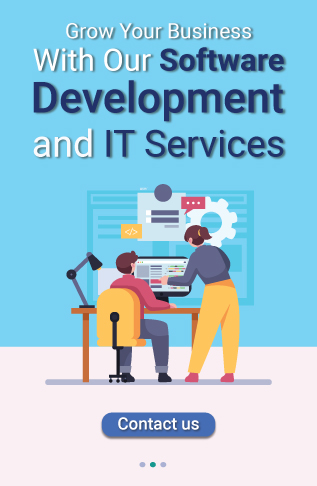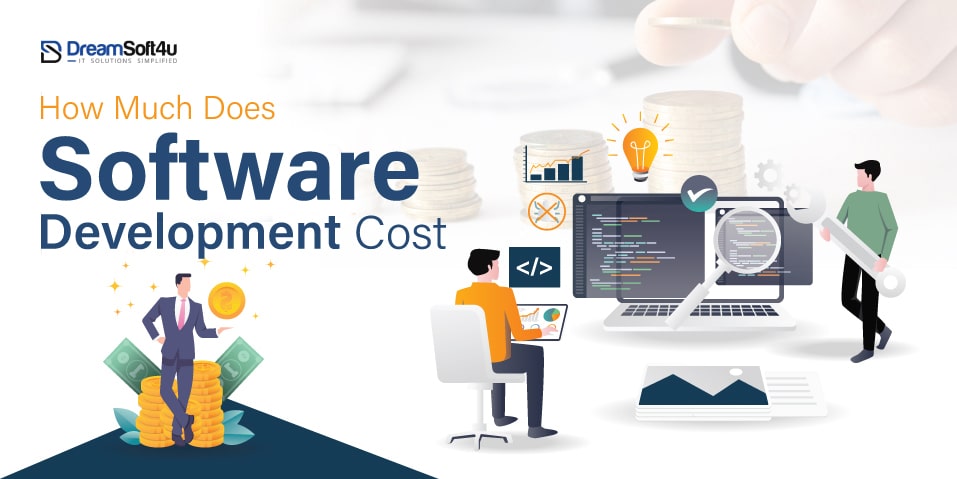Every second matters in today’s competitive landscape. Companies that use lots of different systems, tools, and software often experience delays, errors, and inefficiencies. This issue becomes more challenging for businesses using AI. Even minor problems can cause delays, making them fall behind their competitors. As AI becomes more integrated into a business’s operations, another challenge ahead of them is how to make their AI systems work better and easily integrate with other tools. What if I told you there is a way to streamline operations and integrate different AI systems? Introducing the MCP Server (Model Context Protocol Server).
MCP Server is a one-stop solution for businesses looking to improve their AI workflows and ensure smooth communication between different systems.
The MCP server simplifies everything by acting as a central hub—making your operations faster, more reliable, and scalable.
Despite its vast potential, there are still a lot of businesses that might not even know about MCP Servers. But do not worry; we will explain!
In this blog, we’ll deeply dive into understanding what MCP servers are, their critical role in AI workflows, how they are reshaping the future of business operations, and how you can leverage them to stay ahead of your competitors.
Table of Contents
ToggleWhat is an MCP Server?

MCP stands for Model Context Protocol. It acts as a bridge between AI models and external tools. It ensures smooth communication and interaction. Think of it as a translator that helps AI models understand and work with different systems, pull in data, and perform tasks effectively.
MCP servers are designed to ensure AI models understand the context of what’s happening in the AI in software development they’re working with, and they also help the models follow the correct rules. MCP helps AI understand information and allows it to take action. This is key because the AI needs to make decisions based on its working environment.
For example, If an AI model is helping a developer write code in an editor. Then, the MCP server ensures the AI understands what the developer is doing. The server ensures the AI can provide helpful suggestions or actions without interrupting the code.
Here’s how it works:
- Model: The AI model (e.g., Claude) knows the task (such as coding).
- Context: The context is the environment in which the model works. For example – a code editor where the developer writes code.
- Protocol: The protocol defines the rules for how the AI interacts with its environment. It ensures its suggestions or actions are helpful. And do not disrupt the workflow.
The MCP server is a universal connector, allowing AI models to interact easily with APIs, databases, and business applications. It enables AI to process information and act upon it in real time.
MCP was initially developed by Anthropic (the creators of Claude). However, it’s also being used by companies like OpenAI, Zapier, Replit, Sourcegraph, and Windsurf.
General Architecture of Model Context Protocol (MCP)
MCP has three main parts that work together to make everything run smoothly, i.e., MCP Server, Client, and Host. Here is what each one does:
- Server: The MCP Server is like a service that provides data or tools to the AI, such as documents, databases, or real-time information. Think of it as the “data provider” that gives the AI the resources it needs to do its job.
- Client: The MCP Client is part of the AI model, like LLM. It communicates with the MCP Server, sending requests when the AI needs data or wants to take action. It is like the “messenger” that helps the AI get what it needs.
- Host: The MCP Host is the platform that brings everything together. It connects the AI model and the MCP Client, ensuring the AI can access external tools or data through the MCP Server.
Role of MCP Servers in AI Workflows
MCP servers ensure smooth communication and integration between AI models and external tools or data. Let’s explore the key roles it serves in AI-driven workflows:
1. Bringing AI and Tools Work Together
MCP servers act as a bridge, helping AI models connect with different tools and systems. Instead of AI needing to work directly with each tool or data source, the MCP server organizes the flow of information between them. This ensures that AI can pull in data, use external tools, or perform actions in other applications without problems, making everything work smoothly.
2. Making AI Smarter and Context-Aware
The MCP server makes AI systems more aware of the environment in which they operate. This awareness allows AI to do more than process detached pieces of data. AI can now understand the context, pulling information from a calendar, a project management tool, and historical interactions with a customer. With context, AI can make more relevant decisions and provide more valuable answers, becoming more thoughtful and helpful in any setting.
3. Simplifying AI Development
Building and integrating AI with external systems can be very complex and take a long time. The MCP server for AI workflows makes this process more manageable by introducing a standard way for AI to communicate with other services and tools – and developers no longer have to build custom solutions for each integration. They can work with the MCP server to take care of interacting with those services, and they’ll have more time to build higher-order features and functionality within their application.
4. Improving Compatibility and Reusability
One of the best features of MCP servers is that MCP server. It helps different AI models and tools communicate using the same “language,” making working together easier. This common framework allows developers to reuse the same server across different projects. This also makes the MCP server highly reusable, as developers can use the same server across various projects, making their systems more flexible and efficient.
5. Creating Autonomous Agent Workflows
MCP servers play an essential role in developing workflows with multiple AI agents that operate together with minimal ongoing human intervention. For example, if an organization uses one agent to categorize data and another to check quality, the MCP server assures agents to communicate and collaborate appropriately. This allows organizations to automate work tasks and processes so that human supervision is less frequently required to produce an effective and trusted workflow.
6. Transforming and Routing Data
AI solutions often deal with large amounts of data from multiple systems, which must be formatted correctly and sent to the appropriate locations. The MCP server takes care of all the cleaning, organizing, and routing of the data to the active Generative AI models and tools, so errors are reduced, confusion is minimized, and all of the parts of the system have the most accurate and current data making sure that everything runs smoothly.
7. Connecting AI to the Real World
An MCP server allows AI models to interact with the real world by connecting them to live data and external systems. For example, an AI might need to fetch current weather information, interact with a customer database, or trigger an action in a business application. The MCP server provides the necessary interface for these connections, enabling the AI to take real-world actions and work with real-time data, making it much more effective and practical.
Read Also: How AI and ML are transforming Software Development?
How Does MCP Replace APIs for Seamless AI Integration?
Connecting AI systems to external tools and data is crucial in AI development.
Traditionally, APIs connect AI models to external tools but are inefficient, fragmented, and insecure.
MCP (Model Context Protocol) is changing this by offering a more straightforward, standardized, and secure way to connect AI models to tools and services.
Problem with API-Based AI Integration
Using APIs to integrate AI with services like Google Docs or smart home devices leads to challenges:
- Fragmentation: Each service (like Google Docs or a smart device) needs its API key, authentication, and data format, making things messy and complicated to manage.
- Development Overhead: Building custom connectors for each service takes time.
- Vendor Lock-In: Many integrations tie you to one service provider. It makes it hard to switch or scale as you grow.
- Security Risks: Managing multiple API keys increases the chance of risk.
- Scalability: As businesses grow, handling many API connections becomes complex and inefficient.
These issues slow down development and limit AI’s potential. But not anymore!
MCP Server Solves This Problem
MCP acts as a “universal port” for AI systems, much like a USB port works for devices. It simplifies AI integration by providing a standardized connection to any tool or service.
Instead of managing multiple APIs, developers connect to an MCP server. The server handles all the complexities in the background, like authentication and data translation. This makes development faster, more secure, and scalable, allowing AI to connect to any compatible service easily.
Real-World Applications of MCP
Here are five examples of how businesses can benefit from MCP Server:
1. Multi-System Workflow Automation
MCP servers help companies automate processes that involve jumping between different systems. For instance, a new order could be placed, and the MCP server would automatically update the inventory, notify the sales team, and send a shipping request without anyone taking action. Connecting various marketing, sales, and customer service-related processes could help keep everything working efficiently and save time.
2. Project Management and Team Collaboration
MCP makes working together as a team easier. It links tools like Trello, Asana, or Slack to your system. It allows the AI to create tasks, track deadlines, and send reminders automatically. This ensures the team stays organized and on track without updating each tool individually.
3. Research and Knowledge Discovery
MCP helps researchers quickly find the information they need. It connects your system to resources like databases and academic papers, so when a researcher needs the latest research on a topic, the MCP server can pull it up in no time. This reduces searching and helps researchers stay current with the latest findings.
4. Data Analytics and Monitoring
With MCP, businesses can track and analyze data more easily. For instance, the system can pull up real-time sales data, identify trends, and alert you if there’s an issue. It allows companies to make quick decisions based on up-to-date data, which helps improve performance and keep things running smoothly.
5. Sales and Marketing Assistance
MCP helps sales and marketing teams work smarter. By connecting tools like CRM systems, it can update customer records, track campaign success, and even send follow-ups automatically. It also helps identify the best leads to focus on so sales efforts are more targeted and efficient.
Benefits of Using MCP Servers in AI

Here are some key benefits of using MCP servers in AI:
Streamlined Data Access Across Multiple Tools
MCP servers make it easy for AI to get the data it needs from different tools or systems, all in one place. Whether pulling info from a database, a document, or an online service, the MCP server acts as a bridge, ensuring AI can access everything without jumping between different platforms. This makes AI faster and more efficient, helping businesses get the correct data at the right time.
Eliminates Integration Complexity
Integrating different tools and systems with AI can be complicated. However, with AI MCP servers, this complexity is eliminated. Instead of building custom connections for each tool, MCP servers provide a standardized way to link all your systems. This makes it easier to set up and maintain, reducing the headache of managing multiple integrations.
Reduces Development Time
Building AI systems can take a lot of time, especially when connecting to different tools. With MCP servers, developers don’t have to make separate connections for each system. Instead, they can use one easy solution, i.e., an MCP server, to handle all the communication. This saves time, allowing developers to focus on improving the AI’s performance and adding new features instead of spending time on complicated integrations.
Cutting Down on Latency
Real-time decisions are critical in finance, healthcare, or customer service. AI’s decisions might come too late if there’s too much delay. MCP servers help speed things up by optimizing how data is transferred between AI models and tools. This means your AI can work faster and respond more quickly.
Boosting AI Assistant Capabilities and Reach
MCP servers make AI assistants more powerful. They connect AI to more tools and data, allowing it to do more tasks. Instead of just answering questions, AI can now access live data, complete actions, and even make decisions. This makes AI assistants much more powerful, allowing them to help businesses in ways that were not possible before.
Robust Security and Governance
Security is a top concern, especially when handling sensitive data. MCP servers ensure that data is kept secure by controlling who can access it. This adds a layer of protection, ensuring that only the right people can access the information they need. This makes MCP servers a reliable choice for businesses that must maintain strong security and comply with governance standards.
Read Also: Top 11 Generative AI Use Cases in Software Development
Challenges of MCP Server in AI
Here are some significant challenges of MCP Server in AI:
1. Scalability Issues
You’ll need to handle more data and users as your business grows. While MCP servers work well for smaller systems, they can struggle when things get bigger. This can cause slowdowns or performance issues as you scale up.
2. Security Concerns
Any system that deals with data needs to be secure. MCP servers are no different. They can be vulnerable to things like unauthorized access or attacks, so it’s essential to ensure they are protected to keep sensitive data safe.
3. Managing Too Many Tools
MCP servers can connect to many tools, but it gets tricky when there are too many systems to manage. Having separate servers for emails, databases, and other tools can become overwhelming. It’s essential to keep everything organized to avoid confusion.
4. Broad Adoption and Ecosystem Maturity
More support and tools must be available for MCP servers to be widely used. Currently, the MCP ecosystem is still growing, so businesses may be hesitant to fully adopt it until more resources and solutions are available to help them.
5. Reliability and Fault Tolerance
MCP servers are designed to work reliably, but things can still go wrong. In critical areas like healthcare or finance, failure can be a big problem. Ensuring the servers stay up and running without issues is key to keeping everything safe and functional.
Ready to streamline your AI-driven workflows with MCP Servers?
Our team of AI experts is here to help you implement MCP solutions.
Conclusion
The MCP Server plays a big part in how AI interacts with different tools and data sources. It makes integration and communication between AI models and external tools much easier without needing separate integrations. As AI continues to improve, MCP will play a key role in unlocking new possibilities and shaping the future of intelligent systems. It’s pushing AI to do more and laying the foundation for more thoughtful, connected systems. We hope this guide helps you understand the role of MCP in AI workflows, as well as its benefits, challenges, and use cases so that you can understand how essential MCP is for your business to streamline operations and allow you to grow more efficiently.
So, if you want to utilize the full potential of AI in your business, then it’s time to use the MCP server to level up your game. For this, you need an experienced AI development company like DreamSoft4U, where a team of AI professionals will help you use the MCP server and improve your efficiency.
FAQs
Q1. What is an MCP server?
An MCP (Model Context Protocol) server connects AI models to other tools and data sources, making it easier for the AI to access and interact with different systems. It acts like a bridge to ensure smooth communication and efficient task execution.
Q2. How does the MCP server work?
MCP servers provide a standardized way for AI models to communicate with external tools and data. They help the AI access information, perform tasks, and understand the context of what it’s doing, all through a single connection.
Q3. How does MCP improve AI systems?
MCP improves AI by quickly pulling in data from multiple sources and performing actions across different systems without a complex setup. It helps the AI make better, more relevant decisions and work more efficiently.
Q4. What problem does MCP solve?
MCP solves the problem of connecting AI to many different systems without needing separate integrations. It simplifies the process, saving time and reducing the chances of errors in AI workflows.
Q5. What are the key benefits of using MCP servers?
The key benefits include:
- Simplified data access across multiple tools.
- Faster development with easier integration.
- Improved AI performance by connecting to more tools and data.
- Better security for controlling data access.
- Scalability to grow with your business needs.
Q6. Can MCP servers be scaled for large businesses?
MCP servers can be scaled for larger businesses but require careful planning. While they work well for smaller systems, larger setups may need additional optimization to handle more data and users efficiently.
Q7. How do MCP servers differ from traditional APIs?
Unlike traditional APIs, which require different connections for each tool, MCP servers offer a standardized way to connect multiple systems simultaneously. This reduces the complexity and makes everything work together more smoothly.























